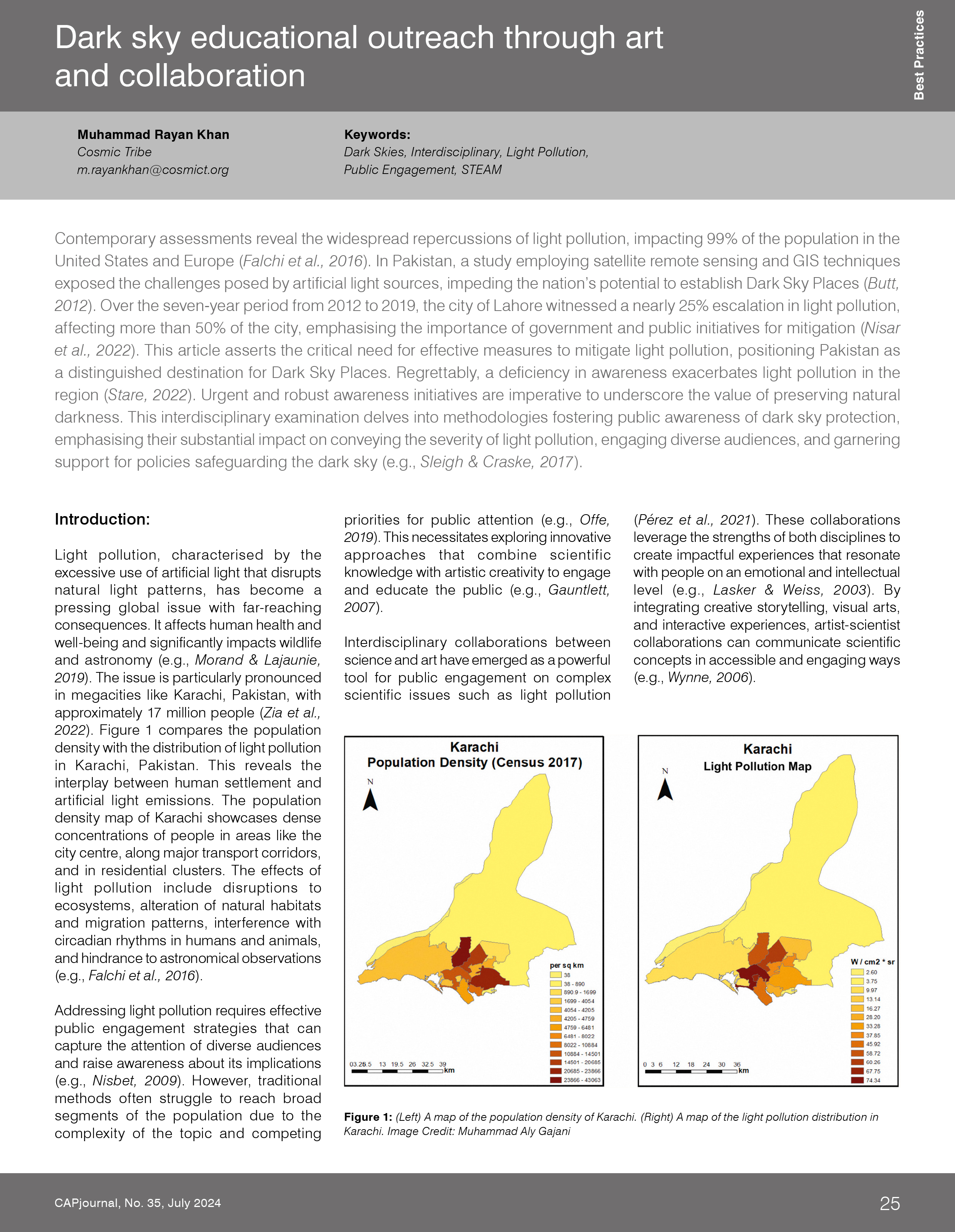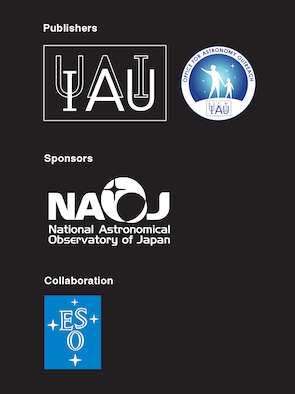|

Download this article
- PDF (1.5 MB)
Back to the Table of Contents
|
Dark sky educational outreach through art and collaboration (page 25)
Khan, M. R.
Contemporary assessments reveal the widespread repercussions of light pollution, impacting 99% of the population in the
United States and Europe (Falchi et al., 2016). In Pakistan, a study employing satellite remote sensing and GIS techniques
exposed the challenges posed by artificial light sources, impeding the nation's potential to establish Dark Sky Places (Butt,
2012). Over the seven-year period from 2012 to 2019, the city of Lahore witnessed a notable 23.43% escalation in light pollution,
affecting 53.99% of the city, emphasising the importance of government and public initiatives for mitigation (Nisar
et al., 2022). This article asserts the critical need for effective measures to mitigate light pollution, positioning Pakistan as
a distinguished destination for Dark Sky Places. Regrettably, a deficiency in awareness exacerbates light pollution in the
region (Stare, 2022). Urgent and robust awareness initiatives are imperative to underscore the value of preserving natural
darkness. This interdisciplinary examination delves into methodologies fostering public awareness of dark sky protection,
emphasising their substantial impact on conveying the severity of light pollution, engaging diverse audiences, and garnering
support for policies safeguarding the dark sky (e.g., Sleigh & Craske, 2017).
Suggested Citation (APA)
Khan, M. R. (2024). Dark sky educational outreach through art and collaboration. Communicating Astronomy with the Public Journal, 35, 25-31. https://www.capjournal.org/issues/35/35_25.pdf
|

